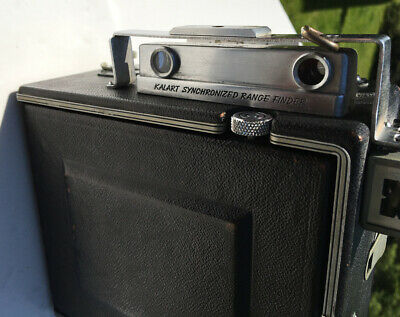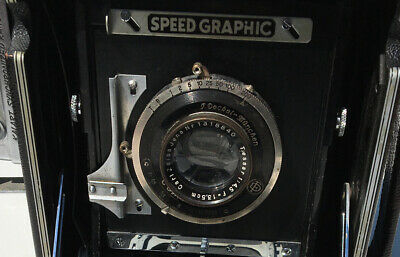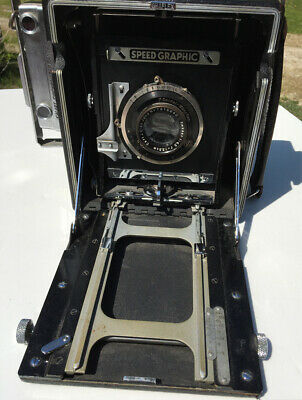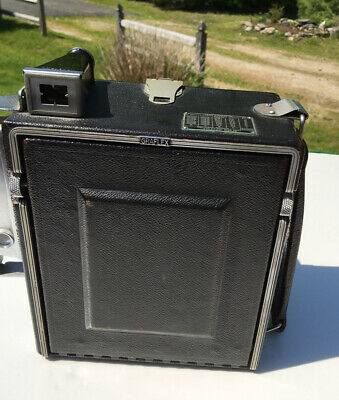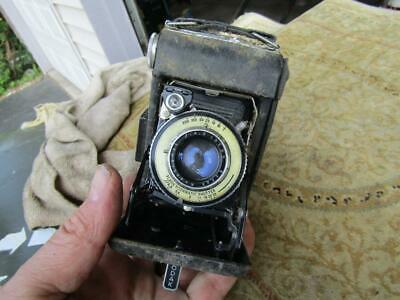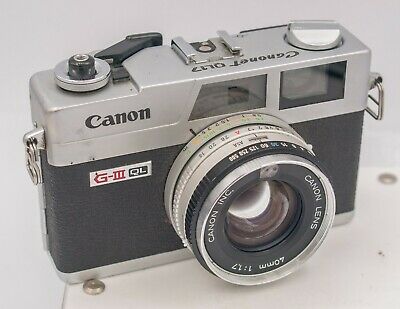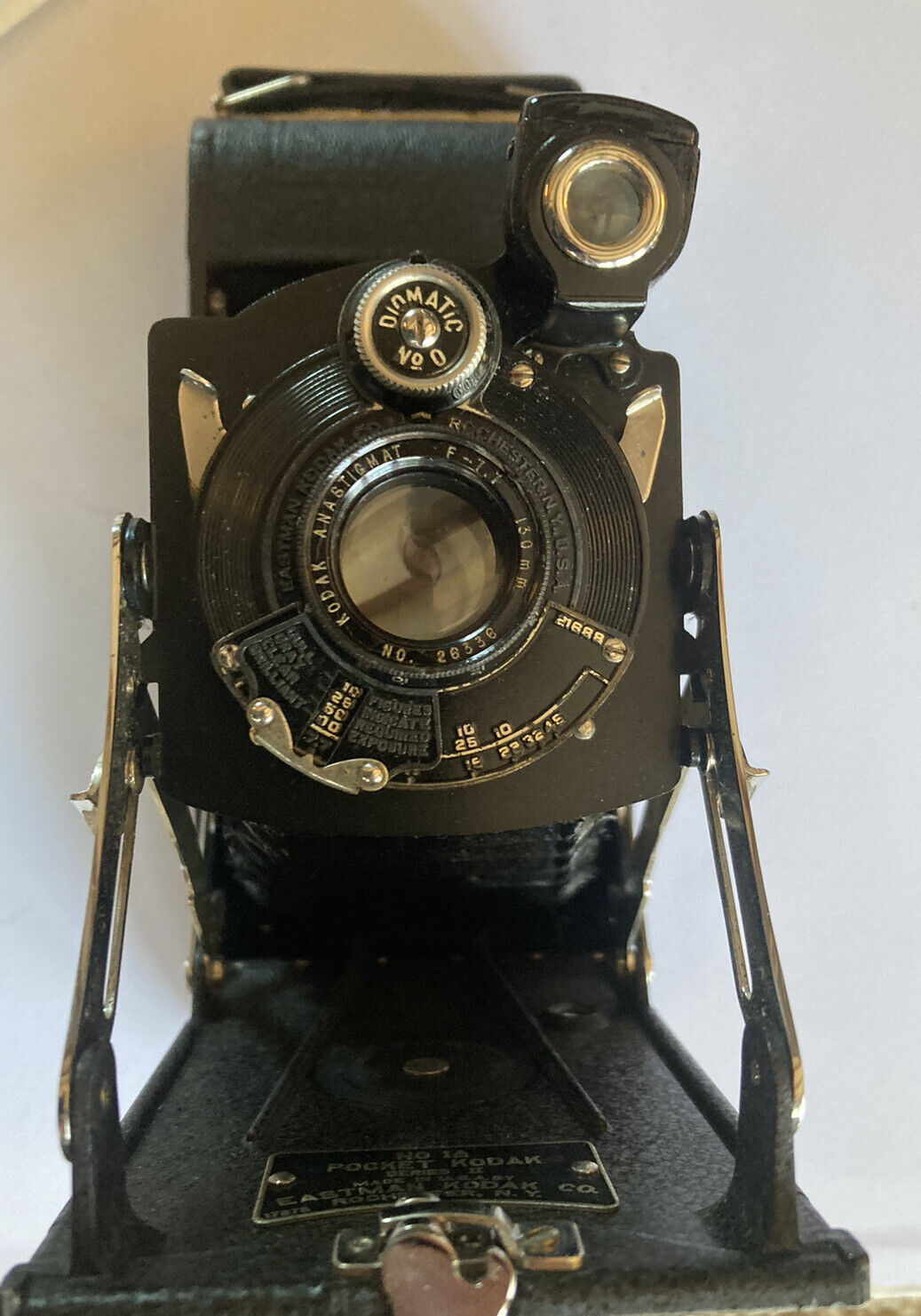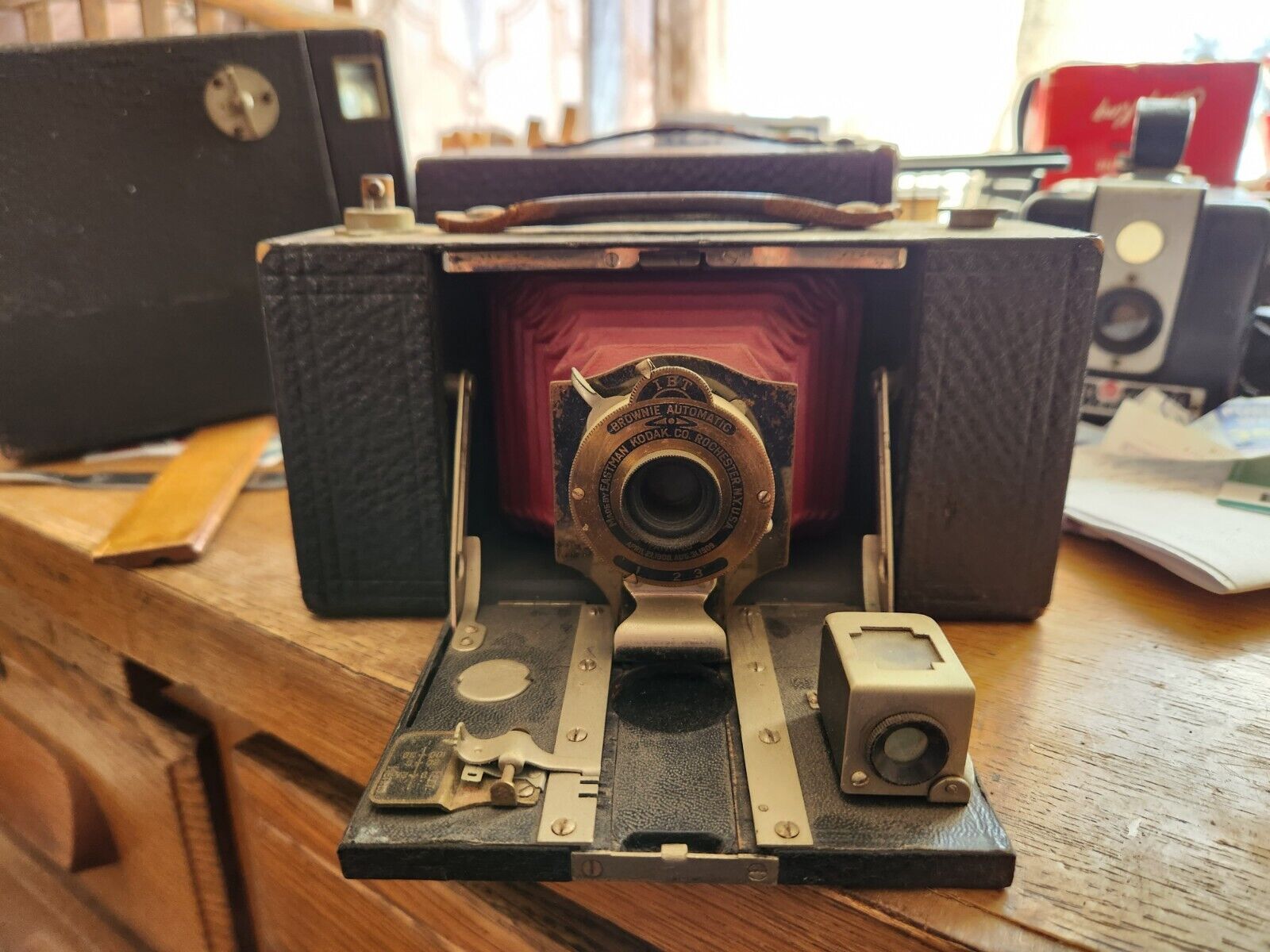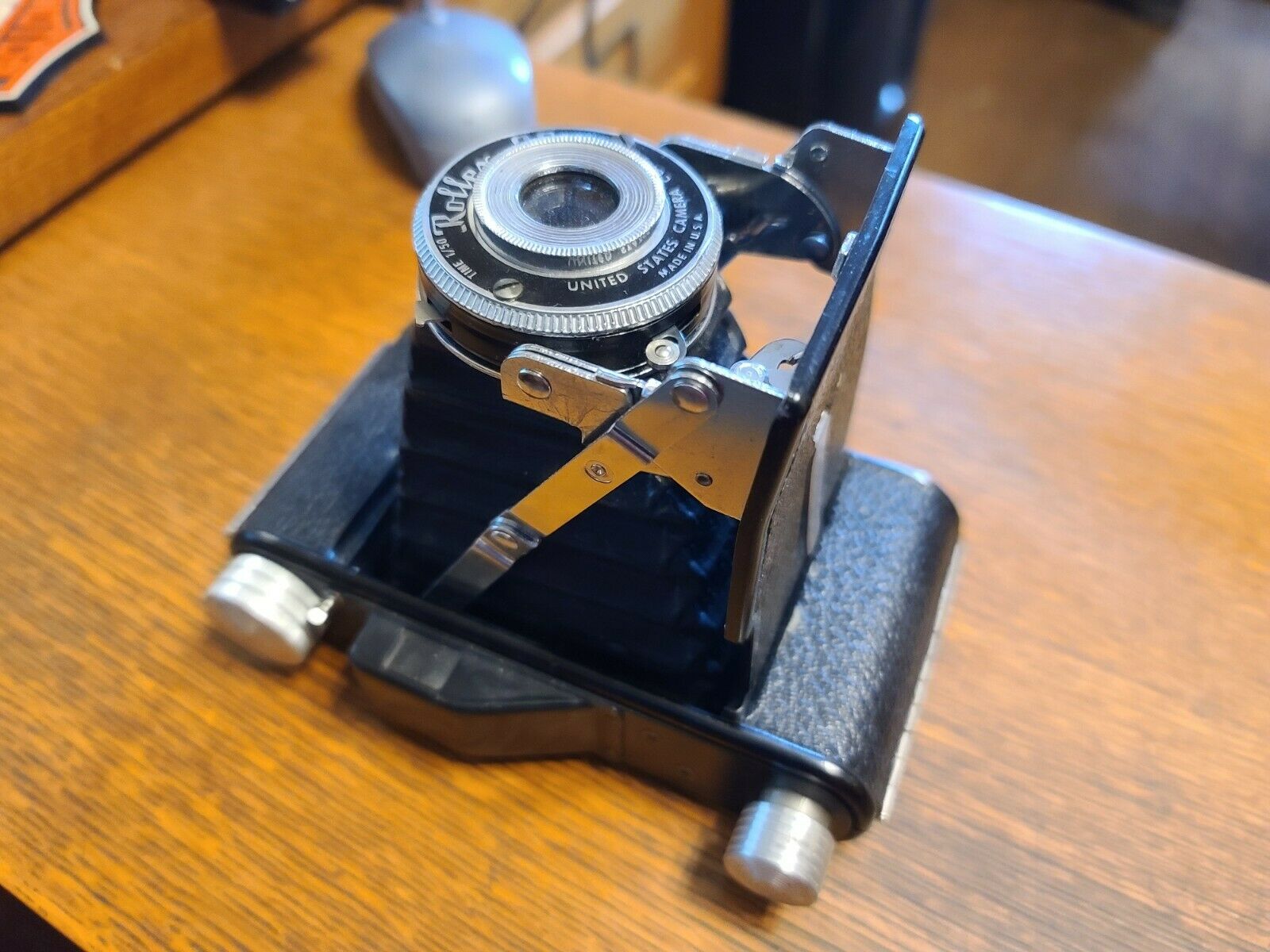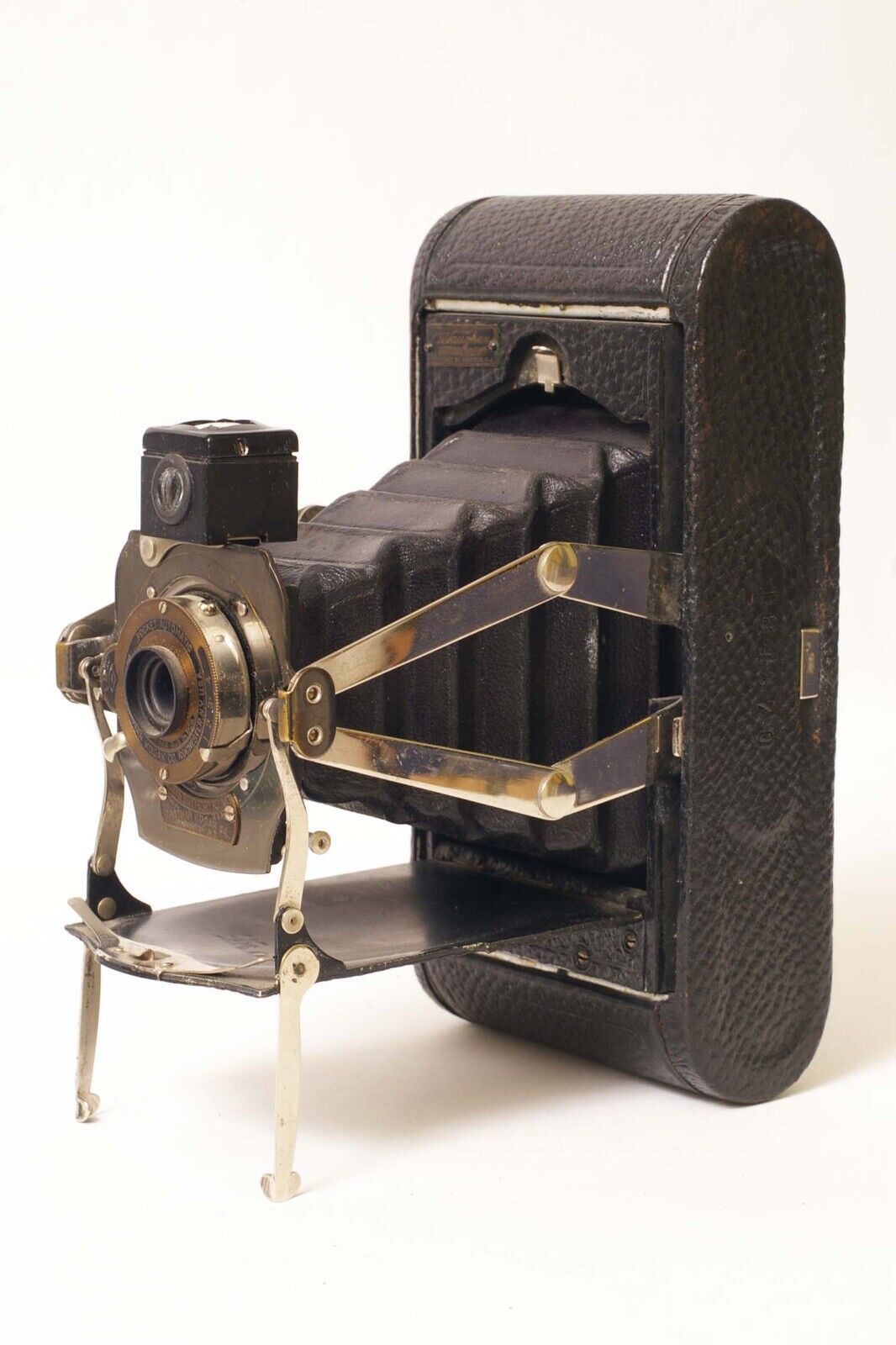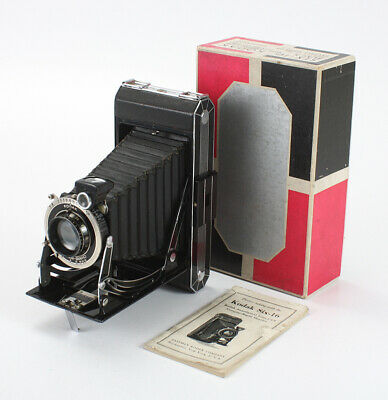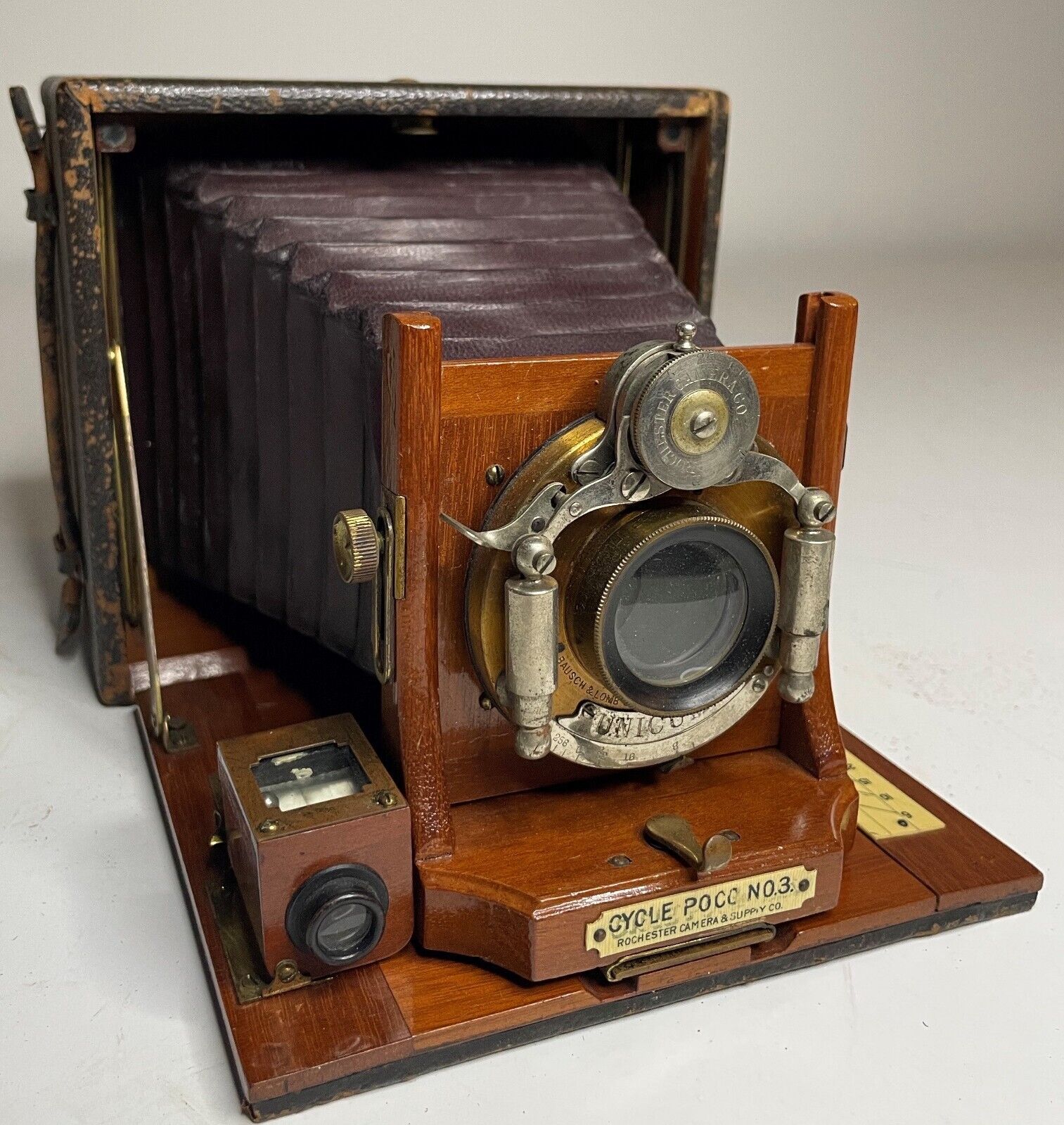-40%
VINTAGE "SPEED GRAPHIC" FOLMER GRAFLEX CAMERA MEDIUM FORMAT "23" 120 ROLL FILM
$ 131.97
- Description
- Size Guide
Description
Photographs throughout Ad:Offered for auction from a recent Estate sale is the following a SPEED GRAFLEX CAMERA as defined below:
ORIGINAL VINTAGE “SPEED GRAPHICS” 2 X 3 CAMERA BY “FOLMER GRAFLEX CORP”, ROCHESTER, NY - “23” 120 ROLL FILM HOLDER - LENSE F. DECKEL - MUNCHEN TESSAR F:4,5 F 13.5 CM - CARL/ZEISS JENA NR. 1318840 “COMPUR” WITH KALART SYNCHRONIZED RANGEFINDER --
COMPUR SHUTTER RANGE 1934-1935 PERIOD WITH SERIAL NUMBER OF 3112253 - FOLMER GRAFLEX CORP IN BUSINESS FROM 1928-1946.
Below is additional information on the Graflex Speed Graphic camera and the F. Deckel Co.
The camera is from an estate sale.
The Speed Graphics Camera appears to be in very good condition as photos shows. The bellows are complete without any damage as photos show. The camera is untested as to film development capabilities. The name "Speed" in Speed Graphic comes from the 1/1000s shutter speed offered by its focal-plane shutter. The Graflex focal-plane shutter is the essence of simplicity -- a single long curtain of rubberized fabric with a number of slits. The focal plane shutter functions fine as far as I can tell. The shutters on the lenses function open and close but can not be set and activated. The Focal Plane shutters do not use these shutters from my research. The lenses appear clean along with the Sight and Kalart Synchronized Rangefinder. The “23” Film Holder functions with roller knob. The lenses on the camera’s are as noted above F. DECKEL- MUNCHEN, TESSAR F:4.5 F-13.5 CM (135)MM - CARL/ZEISS JENA NR 131884 “COMPUR”
Please view photos for condition. The Cameras are sold as is. It has not been tested with film. The Camera Weight with “23” Graphic Roll holder is 6 lb, 9 3/8 oz.. Below I have added additional information on the Graflex Corporation Camera Co. and the F. Deckel Munchen Len Co. History and 23 photographs. Please view photos for condition. Note: Camera is sold as is.
The Speed Graphic was a press camera produced by Graflex in Rochester, New York. Although the first Speed Graphic cameras were produced in 1912, production of later versions continued until 1973; with the most significant improvements occurring in 1947 with the introduction of the Pacemaker Speed Graphic (and Pacemaker Crown Graphic, which was one pound [0.45 kg] lighter and lacked the focal plane shutter).
Despite the common appellation of Speed Graphic, various Graphic models were produced between 1912 and 1973. The authentic Speed Graphic has a focal plane shutter “AS DOES THIS CAMERA OFFERED FOR AUCTION DOES” that the Crown Graphic and Century Graphic models lack. The eponymous name "speed" came from the maximum speed of 1/1000 sec. that could be achieved with the focal plane shutter. The Speed Graphic was available in 2¼ x 3¼ inch, 3¼ x 4¼ inch, 5 x 7 inch and the most common format 4 x 5 inch. Because of the focal plane shutter, the Speed Graphic can also use lenses that do not have shutters (known as barrel lenses).
The Speed Graphic was a slow camera. Setting the focal plane shutter speed required selecting both a slit width and a spring tension. Each exposure required the photographer to change the film holder, open the lens shutter, cock the focal plane shutter, remove the dark slide from the inserted film holder, focus the camera, and release the focal plane shutter. Conversely, if the lens shutter were used, the focal plane shutter (on the Speed Graphic and Pacemaker Graphic models with both shutters) had to be opened prior to cocking using the "T" or TIME setting, and then releasing the shutter in the lens. If indoors, the photographer also had to change the flashbulb. Each film holder contained one or two pieces of sheet film, which the photographer had to load in complete darkness. Faster shooting could be achieved with the Grafmatic film holder—a six sheet film "changer" that holds each sheet in a septum. Even faster exposures could be taken if the photographer was shooting film packs of 12 exposures, or later 16 exposures (discontinued in the late 1970s). With film packs one could shoot as fast as one could pull the tab and cock the shutter, and film packs could be loaded in daylight. A roll film adapter that used 120 or 220 film was available for 2.25 x 3.25, 3.25 x 4.25 and 4 x 5 inch cameras that permitted 8 to 20 exposures per roll, depending on the model of the adapter. Photographers had to be conservative and anticipate when the action was about to take place to take the right picture. The cry, "Just one more!" if a shot was missed was common. President Harry Truman introduced the White House photographers as the "Just One More Club."
The company name changed several times over the years as it was acquired and later spun off by the Eastman Kodak Corporation, finally becoming a division of the Singer Corporation and then dissolved in 1973. The award-winning Graflex plant in Pittsford, New York is still standing and is home to Veramark Technologies, Inc., formerly known as the MOSCOM Corporation. This camera has the following company name along with years of manufacture 1928-1946 Folmer Graflex Corp., Rochester, NY.
F. Deckel was a German company based in Munich and one of the top shutter makers in the history of photography. It was founded in 1903 and enjoyed their most prosperous phases in the 1930ies, and then again in the 1950ies and 1960ies. Besides leaf-shutters it produced its own machine tools and also manufactured machine tools for other industries. In 1994 it went bankrupt.
History
The precision mechanic Friedrich Deckel (born December 11, 1871 in Jungingen; † July 10, 1948 in Munich) started his carrier in 1889 as a laboratory mechanic at the Zeiss company in Jena. He directly reported to Ernst Abbe, one of the Co-founder of the Zeiss company. At the end of 1898, Deckel went into business for himself with a mechanic's workshop and in 1903 founded the company "Bruns & Deckel" in Munich together with the inventor Christian Bruns. Bruns developed the Compound leaf-shutter, which the company successfully manufactured and marketed from 1904. Bruns left the company as early as 1905, but continued to develop shutters for cameras. Friedrich Deckel thus became the sole owner of the company now named as "Friedrich Deckel GmbH".
The companies Carl Zeiss, Bausch & Lomb and Deckel's most important competitor Alfred Gauthier became co-partners in 1910. In 1911, Carl Zeiss acquired the patents for the new Compur shutter from Christian Bruns and let Deckel produce it under license. The Compur shutter had a newly developed gear escapement for slow speeds and with this innovation it became the companies most important product for decades to come. In 1961 the venture was even renamed Compur-Werk GmbH & Co..
The company was an essential part of the somewhat hidden leaf-shutter cartel led by Carl Zeiss. The foundation directly controlled Deckel's activities by its financial share as well as being the owner of its most important Compur patent (DRP 258.646). In 1931 Carl Zeiss also silently acquired the majority shares of Alfred Gauthier, Deckel's most important competitor and at the same time co-partner. The merger of many small independent camera producers in 1926, which formed Zeiss Ikon (also controlled by Carl Zeiss), shut down most of their former shutter productions and switched to either Deckel or Gauthier shutters. Only very simple shutters would still be produced by some camera producers themselves.
TESSAR:
The Tessar is a photographic lens design conceived by the German physicist Paul Rudolph in 1902 while he worked at the Zeiss optical company and patented by Zeiss in Germany; the lens type is usually known as the Zeiss Tessar.
A Tessar comprises four elements in three groups, one positive crown glass element at the front, one negative flint glass element at the center and a negative plano-concave flint glass element cemented with a positive convex crown glass element at the rear.
Despite common belief, the Tessar was not developed from the 1893 Cooke triplet design by replacing the rear element with a cemented achromatic doublet. Paul Rudolph designed the Anastigmat with two lenses cemented in 1890. Later, Rudolph thought that a narrow airgap in the form of a positive lens would correct the spherical aberration (as did HL Aldis in 1895) and that this device was much better than the lenses cemented. In addition, this allowed the photographers to have greater freedom when choosing the lenses. In 1899 he separated the lenses in the Anastigmat to produce the fourth element, a group of four Unar lenses (which replaced the two interfaces cemented by the aforementioned device). In 1902, he realized that the two cemented interfaces had many virtues, so he reinserted them in the back of his Anastigmat, maintaining the "air gap" of the previous part of the Unar, thus creating the Tessar design (from the Greek word τέσσερα (téssera, four) to indicate a design of four elements) of 1902. The frontal element of the Tessar, like that of the Anastigmat, had little power since its only function was to correct the few aberrations produced by the powerful posterior element. The set of interfaces cemented in the posterior element had 3 functions: to reduce the spherical aberration; reduce the overcorrected spherical-oblique aberration; reduce the gap found between astigmatic foci.
The first Tessar appeared with a maximum aperture of f/6.3, but by 1907, the maximum aperture had been increased to f/4.5. In 1930, Ernst Wanderslab and Willy Merté from Zeiss developed Tessar lenses with apertures of f/3.5 and f/2.8.
Millions of Tessar lenses have been created by Zeiss and other manufacturers, and are still produced as excellent intermediate aperture lenses. The famous 50mm f/3.5 Elmar lenses used in the first Leica cameras were of this type, designed by Max Berek in 1920. Actually, Zeiss has a large monopoly on this type of construction, because Rudolph's patent was very general.
I will accept PAYPAL and other Ebay payment methods. Items will be shipped Priority Mail usually next day after payment of Paypal, packaging and mail .95


